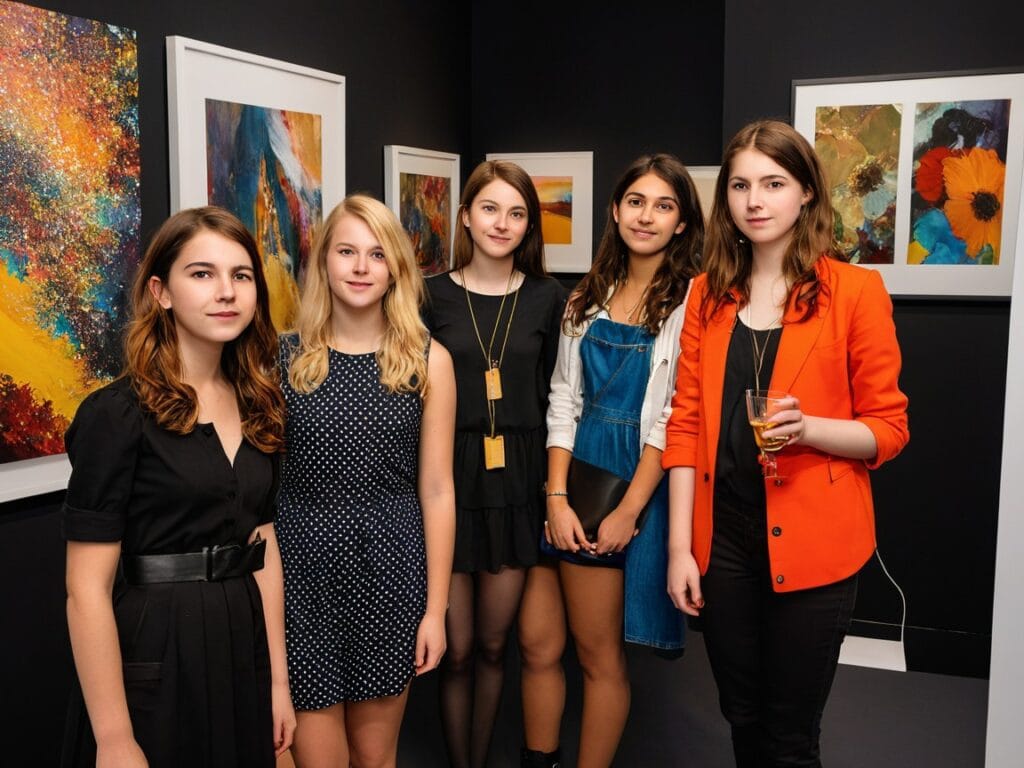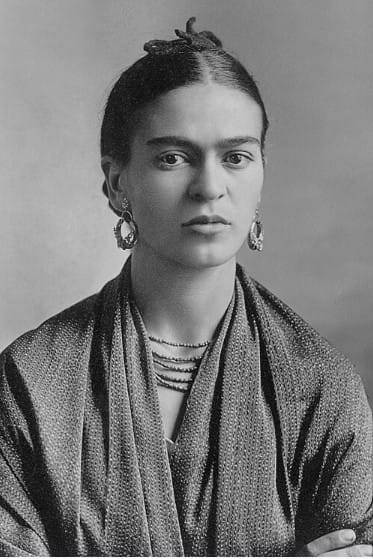Artist Spotlight: Raja Ravi Varma – Bridging Tradition and Modernity in Indian Art
Introduction
When we think of iconic Indian art, certain images instantly come to mind: serene Saraswati with her veena, Lakshmi seated on a lotus, and soulful heroines from the epics. Behind many of these images stands Raja Ravi Varma (1848–1906), a visionary whose work continues to influence art, religion, and popular culture in India today. More than a painter, Varma was—uniquely—a bridge between eras, techniques, and sensibilities.
In this Artist Spotlight, we’ll journey through his life, artistic evolution, major works, controversies, and his ongoing legacy that transcends generations.

Early Life: An Artistic Prodigy in Royal Kerala
Raja Ravi Varma was born into the aristocratic Kilimanoor Palace in Travancore (present-day Kerala) on April 29, 1848. His family, steeped in intellectual and cultural pursuits, recognized his talent early. As a child, he reportedly used natural pigments and charcoals to sketch on palace walls.
His artistic upbringing was anything but accidental. His mother, Uma Ambabayi Thampuratty, belonged to a family of scholars, poets, and artists. His uncle, Raja Raja Varma, became his first formal teacher, guiding his hand through traditional techniques of drawing and mural painting. Later, court artist Rama Swamy Naidu introduced him to watercolors—a new and modern medium in India at that time.
It was a fortuitous meeting with Theodor Jenson, a Dutch portraitist visiting the royal court, that exposed young Ravi Varma to oil painting. Jenson taught him the techniques of European realism, perspective, and chiaroscuro, providing the technical foundation that would define Varma’s monumental contribution to art in India.
Blending East and West: Varma’s Signature Style
The European Influence
Before Varma, much of Indian art, especially in the South, followed the flat forms and bright lines of mural and miniature traditions. Varma, fascinated by the realism of European academic painting, began to experiment with oils, anatomical studies, and three-dimensional modeling of the body. He borrowed techniques such as perspective, naturalistic light and shadow, and detailed portraiture from European masters.
Varma devoured European art books, studied the likes of Raphael and Rembrandt through prints, and closely observed visiting colonial artists. He declared he wished to emulate the European realism but use it to serve Indian stories.
Indian Themes, Indian Souls
What makes his work unique is that, despite his western techniques, his subjects remained unmistakably Indian—mythological figures, melodramatic heroines from the Mahabharata and Ramayana, and recognizable types from Kerala and Maharashtra. The fabrics, jewelry, settings, and gestures are all rooted in Indian culture.
He once said:
"My paintings may be in the European style, but they will tell Indian stories."
From “Shakuntala” to “Nala and Damayanti,” Varma pioneered what we now call indigenized realism.

Key Works: The Birth of Indian Calendar Art
Shakuntala – Embodying Love and Longing
One of Varma’s most famous paintings, Shakuntala, shows the poetic moment from the Mahabharata where Shakuntala feigns removing a thorn to glance at her beloved Dushyanta. The painting masterfully conveys emotion—melancholy, love, yearning—through body language and facial expression.
Damayanti Talking to the Swan
In another celebrated work, Damayanti is depicted listening to a swan carrying messages from her lover, Nala. Varma captures the delicacy of her hope and anxiety in a luminous palette.
The Goddesses Lakshmi and Saraswati
Perhaps Varma’s most lasting contribution is his depiction of Hindu goddesses. His Saraswati—draped in a white sari, calm, and graceful—or his Lakshmi on a lotus, have set the standard for devotional imagery for over a century. Modern posters, idols, and even temple art are all influenced by his formulations.
Portraits of Royalty
Varma was a sought-after portraitist. He painted Indian princes, British officers, and social reformers. His portraits were naturalistic but always dignified, capturing not just the physical but the aura of his sitters.
Sairandhri
This painting, known as “Sairandhri,” depicts Draupadi in disguise—showcasing pain and resilience. Varma’s ability to evoke powerful emotions in mythological characters made his work both popular and profound.
The Lithographic Revolution: Democratizing Art in India
Ravi Varma’s greatest innovation wasn’t just in technique, but in accessibility. In 1894, he and his brother, Raja Raja Varma, set up the Ravi Varma Lithographic Press in Bombay.
How the Press Worked
- Imported advanced German lithography machines.
- Hired and trained local artists, including P.T. Mallaya and Govardhan Das.
- Produced high-quality chromolithographs (color prints) of his paintings.
- These prints were cheap, widely distributed, and reached even remote villages.
Impact
- Devotional Art for the Masses: For the first time, ordinary Indians could hang images of gods and goddesses in their homes.
- Calendar Art: The press birthed the genre of colorful god images in almanacs—a tradition still thriving.
- Iconographic Standardization: His images virtually replaced older folk representations, standardizing how Indians visualized mythological scenes.
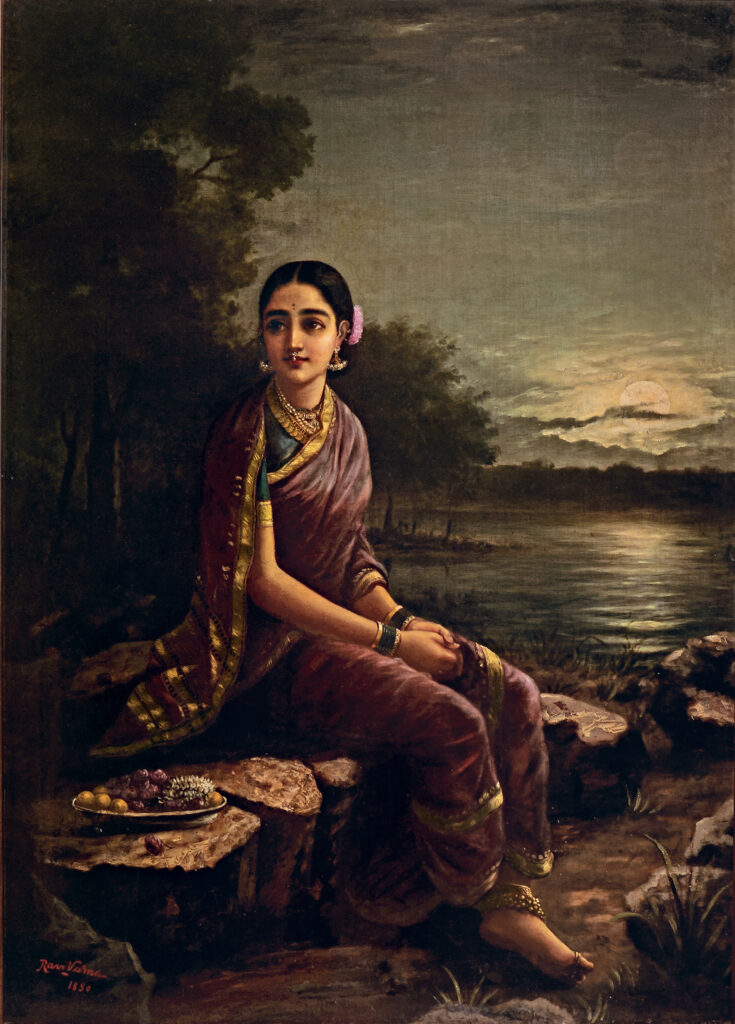
Challenges
The Press struggled financially at times. Legal battles over copyright and debts led to its auction in 1903. But by then, Varma’s imagery had entered Indian consciousness forever.
The Cultural Phenomenon: The “Ravi Varma Woman”
Ravi Varma’s female subjects are perhaps his most lasting legacy. He painted women as both divine and earthly, sensual and spiritual.
Features
- Almond-shaped eyes, dignified posture
- Draped in fine silks with elaborate jewelry
- Set against lush natural or palatial backgrounds
Legacy
- Model for Indian Beauty: His women—part Kerala princess, part pan-Indian ideal—became the template for later advertisements, films, and popular art.
- Criticism: Some modern feminists argue his images idealize or objectify womanhood. Yet many also see his heroines as assertive, intelligent, and central narrative forces.
Reception: Public Adulation and Critical Debate
Indian Elites and European Audiences
Varma was lionized in his own time. He received commissions from the Gaekwads of Baroda, the Maharajas of Mysore and Travancore, and British officials—each wanting to show their prestige through his portraits.
Internationally, his art was exhibited and awarded a medal at the Vienna Art Exhibition (1873), earning him acclamation abroad too.
Critics Speak
He faced criticism on several fronts:
- Traditionalists: Some artists and critics accused him of “polluting” Indian art with western techniques.
- Purists: Detractors lamented the commercial mass production of sacred images.
- Modernists: Later, the Bengal School—led by Abanindranath Tagore—rejected his “photographic realism” in favor of revived miniatures and folk traditions.
Despite this, Varma’s public popularity never faded.
Personal Life and Influences
Family and Collaborators
- Brother Raja Raja Varma: An accomplished artist and his lifelong collaborator, he managed much of the press and correspondence.
- Children: His daughter, Mahaprabha, was both a model and artist; her daughter, Sethu Lakshmi Bayi, became the Regent Maharani of Travancore.
- Travel: Varma traveled widely—Delhi, Pune, Mumbai, Baroda, Mysore—absorbing different regional styles, which enriched his palette and broadened his subjects.
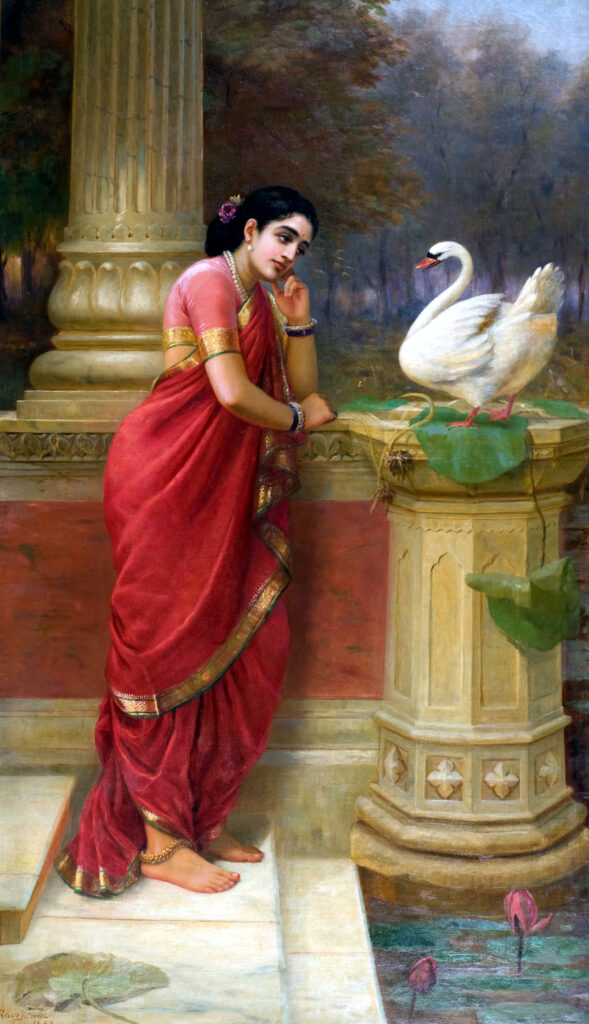
Human Side
Despite his fame, Varma faced immense personal and professional challenges—family deaths, heavy financial losses, and periods of depression. Yet he never stopped creating, painting steadily even in his last days.
Influence on Indian Cinema, Advertising, and Popular Culture
Cinema
The birth of Indian cinema overlapped with the peak of Varma’s popularity. His tableaux-like compositions became templates for early mythological films; directors copied his goddesses’ attire and gestures. To this day, Bollywood’s depictions of historical and divine women owe much to his vision.
Advertising
Early Indian advertisements and matchbox covers adapted Varma’s images for mass communication, blending commerce and culture.
Comics and Calendar Art
From Amar Chitra Katha comics to wedding invitations, his influence persists. Illustrators frequently reinterpret his works, remixing them for modern consumers.
Collectors and Legacy Museums
Where to See Varma Today
- National Gallery of Modern Art, New Delhi: Largest public collection.
- Jaganmohan Palace, Mysuru: Holds several mythological canvases.
- Laxmi Vilas Palace, Baroda: Several original commissions.
- Kilimanoor Palace, Kerala: His home and a family collection.
- Prince of Wales Museum, Mumbai: Key pieces from his Bombay period.
Notable Collectors
Many of his works remain in private royal collections. Some have been auctioned at international venues, fetching considerable sums, reflecting his continued relevance.
Raja Ravi Varma’s Last Years
Varma’s later period was marked by both great honor and personal setbacks. The press was embroiled in legal disputes. Artistic tastes in India shifted towards the Bengal revivalists. Yet, he maintained resilience, working on major projects and mentoring younger artists. He died on October 2, 1906, at 58—leaving behind over 2,000 paintings and an incalculable influence.
Revival and Re-evaluation
In the late 20th century, Varma’s reputation experienced a revival. Major exhibitions, feminist studies, art historians, and contemporary artists all helped re-evaluate his genius.
Modern critics now see him as a modernizer—making art public, shaping a pan-Indian identity, and using new media for cultural transmission.

Pop Culture Tributes
- Films such as “Rang Rasiya” dramatize his life and struggles.
- Modern Indian artists, from M.F. Husain to Raja Ravi Varma’s own descendants, cite his influence.
- Street artists and designers remix his imagery in digital and graffiti art.
Interesting Anecdotes and Stories
The Maharani’s Portrait
Once, the Maharani of Baroda was so moved by Varma’s painting of Goddess Lakshmi that she commissioned him to paint her own portrait, hoping she might be immortalized with the same grace and vitality.
The Raja’s Accountability
It is said that Varma personally oversaw the quality of every lithograph produced at his press, refusing to compromise on color accuracy and detail, even at considerable cost.
Celebrity Status
During his lifetime, Varma was a celebrity—stories abound of people bringing their children to pose as mythological characters for his paintings, believing it would bring them luck.
Continuing the Legacy: Foundations and Awards
To honor his memory, several awards and institutions bear his name:
- Raja Ravi Varma Puraskaram: Kerala government’s highest visual arts award.
- Raja Ravi Varma Heritage Foundation: Run by his descendants, it archives and promotes his works.
His art schools and scholarships support hundreds of young Indian artists every year.
Quotes and Reflections
“The gods and goddesses whom my brush painted reside in the hearts and homes of millions. Is there a higher achievement for any artist?” — Attributed to Raja Ravi Varma
“I have tried as best I can to do justice to the beauty of our land and stories.” — Raja Ravi Varma
Indian Prime Minister Jawaharlal Nehru once remarked, “To the modern Indian consciousness, the gods look like Ravi Varma’s paintings.”
Timeline of Major Events
| Year | Event |
|---|---|
| 1848 | Born in Kilimanoor, Travancore |
| 1866 | Wins first public prize at Madras Fine Arts Exhibition |
| 1873 | Wins medal at Vienna Art Exhibition |
| 1881 | Paints portraits for Baroda royalty |
| 1894 | Establishes Lithographic Press in Bombay |
| 1903 | Press sold due to financial troubles |
| 1904 | Awarded Kaiser-i-Hind Gold Medal by the British Raj |
| 1906 | Passes away in Kilimanoor |
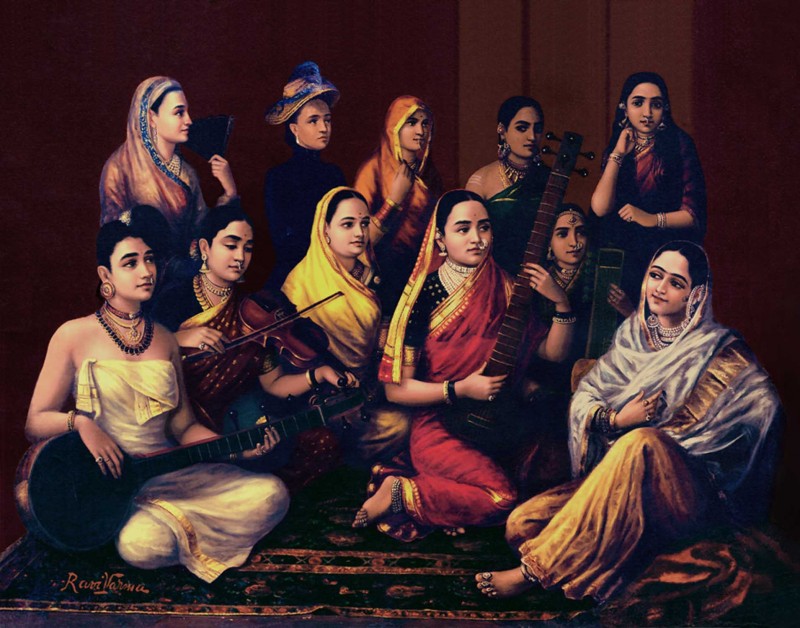
Enduring Relevance: Why Varma Still Matters
Today, Raja Ravi Varma’s art isn’t just studied in museums; it’s lived in the everyday experiences of Indians. Each festival, home calendar, and mythological movie subconsciously channels his imagery. Modern artists continue to reinterpret his style—through digital art, fashion, and cinema—affirming his timeless relevance.
Raja Ravi Varma was not simply an “Indian Raphael”; he was a unique genius who helped catalyze new ways of seeing, believing, and representing. He democratized beauty and mythology, making them part of daily life.
Conclusion
From palace walls to village halls, from art galleries to calendar pages, Raja Ravi Varma’s legacy is universal and enduring. He painted with both precision and passion, capturing the dreams, ideals, and emotions that define the Indian imagination. His brush created not only art but also bridges—between the sacred and the secular, the local and the global, the elite and the ordinary.
For any art lover, knowing Raja Ravi Varma means understanding a vital chapter in India’s story—where tradition met modernity, and myth found new meaning on canvas.
Explore Raja Ravi Varma’s masterpieces at ISKUSS
Read more at Google arts & culture
References
- Partha Mitter, Indian Art (Oxford University Press)
- Rupika Chawla, Raja Ravi Varma: Painter of Colonial India
- National Gallery of Modern Art archives
- The Hindu, “Raja Ravi Varma and His Influence”
- Google Arts & Culture: Raja Ravi Varma Collection
- Indian Express: Revisiting the Legacy of Raja Ravi Varma
- Raja Ravi Varma Heritage Foundation
